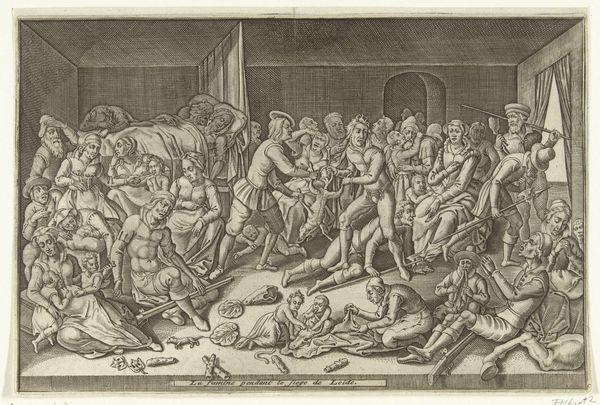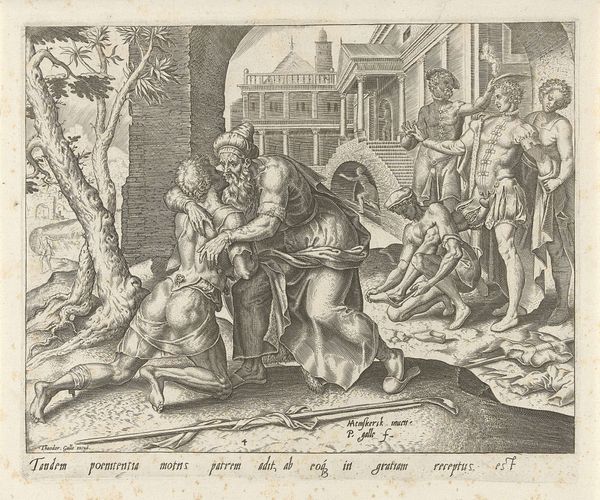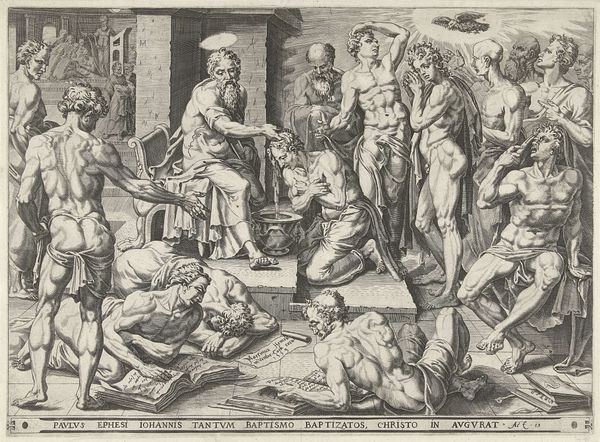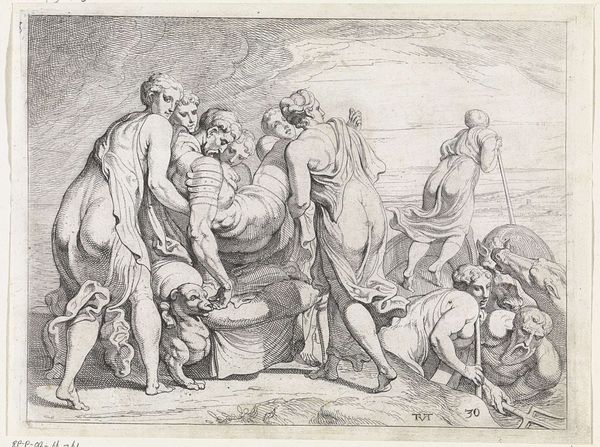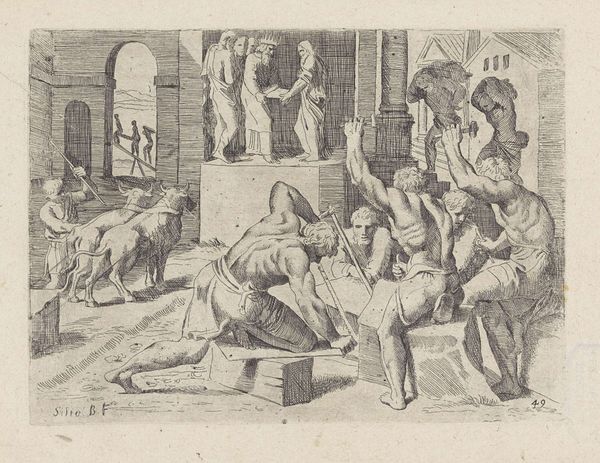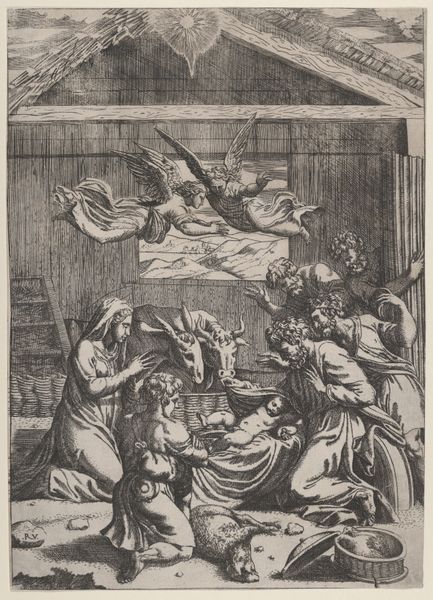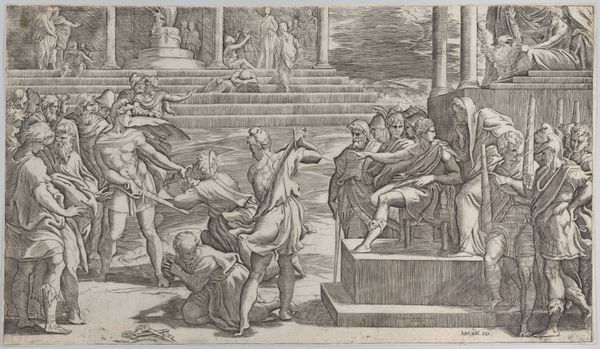
drawing, paper, engraving
#
drawing
#
toned paper
#
quirky sketch
#
baroque
#
pencil sketch
#
sketch book
#
classical-realism
#
figuration
#
paper
#
personal sketchbook
#
sketchwork
#
pen-ink sketch
#
sketchbook drawing
#
history-painting
#
storyboard and sketchbook work
#
sketchbook art
#
engraving
Dimensions: height 188 mm, width 243 mm
Copyright: Rijks Museum: Open Domain
Curator: This engraving, created between 1632 and 1633 by Theodoor van Thulden, is titled "Minerva urges Odysseus to ask for the bow." Editor: It feels almost like a stage set, doesn't it? The architecture looming in the background and the figures arranged almost as if performing for us. The textures, though, are really what grab me—the hatching creating such a tangible sense of volume in the figures. Curator: Yes, observe how the architectural setting frames the scene, emphasizing the performative aspect you mentioned. Van Thulden is particularly adept at manipulating light and shadow through line work, wouldn't you agree? This Baroque dynamism infuses a dramatic tension appropriate to the epic. Editor: Absolutely. The emphasis on line also showcases a remarkable efficiency in the printing process itself. Think of the choices he would have had to make when rendering textures and form; the layering required. It invites reflection on the labour inherent to reproduction and printmaking at this time, before it was mechanized, too. Curator: Indeed, the artist employs the visual language of Classicism to portray this particular scene from Homer. Semiotically, we can interpret Minerva's intervention as a critical point in the narrative, one where divine intervention and human action converge. The symbolism surrounding Odysseus' bow cannot be overstated either—it's a clear marker of identity and prowess. Editor: Right, and consider what such bows were *actually* made of. Seasoned wood, animal sinew, crafted to be resilient and deadly in the hands of skilled users. I mean, this scene relies on materials for its very tension, with labor processes embedded in the object and its application within this tale. Curator: A compelling point. Well, whether considered as a textual object ripe for symbolic decoding or as a material witness of early modern labor, it is safe to say that van Thulden's composition captures a potent synthesis of classical and Baroque ideals. Editor: It has certainly opened my eyes to the tangible labor underpinning epic stories and visual economy required in prints. The blend of the mythological and the material is definitely captivating.
Comments
No comments
Be the first to comment and join the conversation on the ultimate creative platform.

